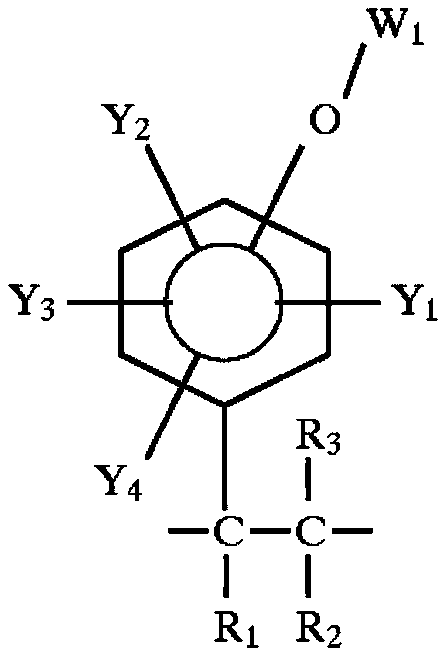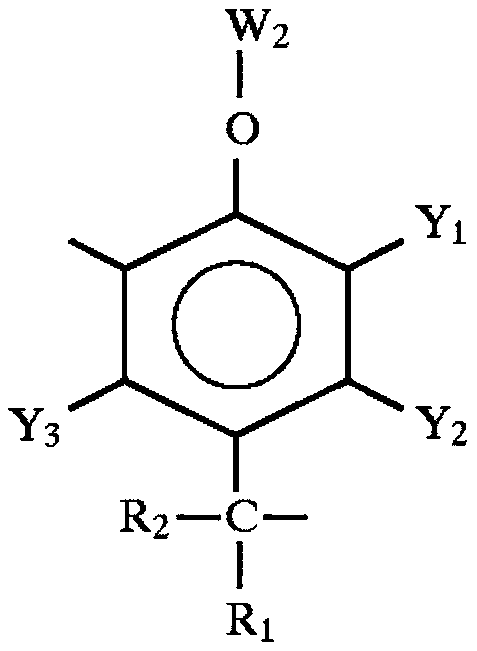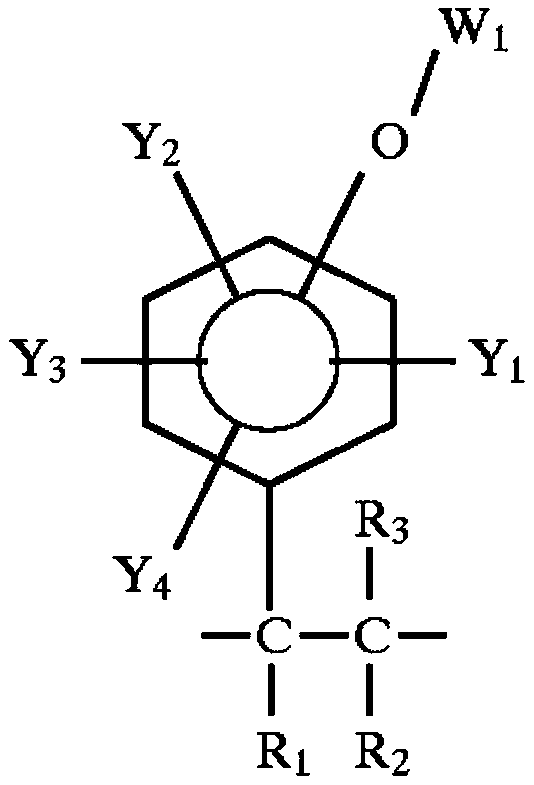Improved secondary Li ion battery and Li capacitor electrode compositions
A lithium-ion, water electrode technology, applied in the direction of hybrid capacitor electrodes, battery electrodes, secondary batteries, etc., can solve the problems of expensive coating steps and drying steps, economically unfeasible, expensive, etc.
- Summary
- Abstract
- Description
- Claims
- Application Information
AI Technical Summary
Problems solved by technology
Method used
Image
Examples
Embodiment A
[0064] In a first series of experiments, the invention was elucidated as follows. Test positive electrodes were prepared using the three slurries described in Table 3 below. For the preparation of all electrode slurries, the solvent N-methyl-2-pyrrolidone (NMP) was used. Example C 1 is a control sample using a standard preparation of binder and other components in the electrode paste. Use the metal chelating polymer K of the embodiment of the invention to prepare embodiment K 1 . Polymer K was prepared using poly(4-hydroxystyrene) as component A, paraformaldehyde as component B, and N-methyl-D-glucamine as the amines of component C. Example G was prepared using metal chelating polymer G, another inventive example 1 . Polymer G was prepared using poly(4-hydroxystyrene) as component A, paraformaldehyde as component B and N-methylethanolamine as component C amines.
[0065] The examples were prepared by adding them in the order listed to the sample cups with lids in a dry ...
Embodiment B
[0075]In view of the surprisingly good adhesion of the sample of Example A prepared using polymer K according to the invention, in the next series of experiments polymer K was compared with a highly adhesive comparative polymer. The benefits of using polymer binders with high adhesion values not according to the invention were compared with metal chelating polymer K according to the invention to determine whether the results for polymer K were simply due to better adhesion combine. In the next series of experiments, an adhesive polyacrylonitrile with a high adhesion value, Example P, which is not a metal chelating polymer according to the invention, was compared with a comparative sample, Example C 2 And a sample prepared with metal chelating polymer K, Example S, for comparison. In addition, the content of polymer K in Example S was higher than that in previous experiments (see Table 3, Example K 1 ) uses 75% less polymer. Finally, an active material different from that ...
Embodiment 1
[0091] The electrode material intermediate of Example 1 was prepared by mixing: 2.52 grams of Polymer G stock solution, 8.46 grams of poly(methyl methacrylate) (PMMA) stock solution and 13.76 grams of pigment paste. The composition was then reduced to 9% solids by weight using the solvent NMP prior to use on the substrate. A stock solution of Polymer G was prepared as follows. An amount of 265 grams of Polymer G was added to 1000 ml of deionized water, mixed and then decanted. The polymer is then collected using a spatula. Then 29.42 grams of recovered Polymer G was dissolved in 69.92 grams of NMP to obtain a stock solution of Polymer G. A PMMA stock solution was prepared by mixing 7.03 grams of acrylic acid methacrylate copolymer with 47.85 grams of NMP. The mixture was heated to 65 °C in a sealed glass bottle to dissolve the PMMA. Cool the PMMA solution before use. Pigment pastes were prepared as follows. 188.11 grams of NMP were added to the stainless steel vessel. W...
PUM
| Property | Measurement | Unit |
|---|---|---|
| length | aaaaa | aaaaa |
Abstract
Description
Claims
Application Information
 Login to View More
Login to View More - R&D
- Intellectual Property
- Life Sciences
- Materials
- Tech Scout
- Unparalleled Data Quality
- Higher Quality Content
- 60% Fewer Hallucinations
Browse by: Latest US Patents, China's latest patents, Technical Efficacy Thesaurus, Application Domain, Technology Topic, Popular Technical Reports.
© 2025 PatSnap. All rights reserved.Legal|Privacy policy|Modern Slavery Act Transparency Statement|Sitemap|About US| Contact US: help@patsnap.com



